As the economy gets tighter and things slow down with several delivery platforms, Multi Apping is becoming a hot topic.
Doordash seems hot for awhile, then they slow down. Uber Eats is great in some areas and terrible in others. Grubhub is still trying to find their way back after losing their ground as the dominant food delivery service.
What do we do when the delivery app we were making good money isn’t working out so well? Is it a good idea to start working multiple apps? Can it lead to being deactivated?
We’ll take a look at multiapping and what all it involves. We’ll ask the important questions about working multiple apps, and finally offer some pro tips about effectively working with more than one delivery company at a time.
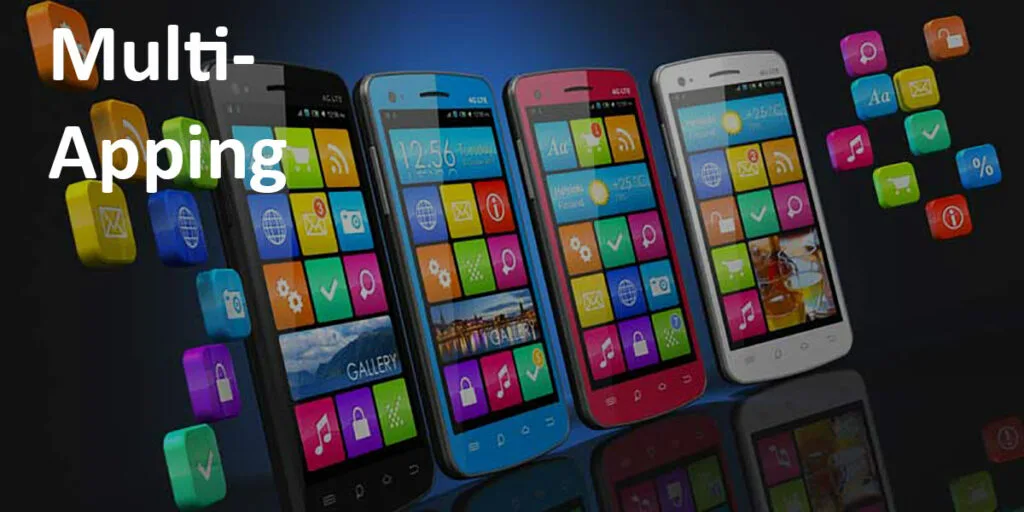
In this article, we’ll look at:
- What is Multi apping?
- Is working multiple platforms a good idea?
- Can multi apping get you deactivated?
- Pro Tips on How to Multi-app
- Frequently asked questions about mutli-apping
What is Multi apping?
Multi-apping is the practice of working for more than one gig economy company at the same time. Rather than taking offers exclusively from Doordas, Uber Eats, Grubhub or other platforms, one decides to take offers from two or more.
You could say there are three levels of working multiple apps:
- Delivering for multiple companies but doing so independently of one another. One may work Instacart in the morning, then move to Doordash for the rest of the day. Then the next day they may turn on the Uber Eats app.
- Taking offers from more than one app at the same time. Upon accepting a delivery, the other apps get paused or logged out until that delivery is complete.
- Accepting multiple offers from different platforms at the same time.
This article does focus mostly on delivery, especially with meal delivery services. However there are several opportunities out there that can apply in the gig economy. You could pick up a meal delivery, and after that accept a rideshare request, then go off and do some last mile package deliveries.
Is working multiple platforms a good idea?
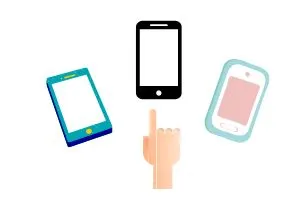
Working multiple applications is a great way to maximize earnings potential. It opens one up for multiple streams of income, which keeps a contractor from being at the mercy of one particular gig economy company.
The important thing to remember is that independent contractors are not employees of these gig companies. Instead they’re providing services as a business. Gig economy work is a business to business relationship.
This was a choice made by these companies. They chose a business model that would dodge employment costs and let them avoid minimum wage guarantees. They decided not to pay for the right of an employee/employer relationship or the loyalty that often goes with such.
That decision gave contractors the legal and contractual right to operate as a business.
What that means is that these gig companies are not employers, but customers.
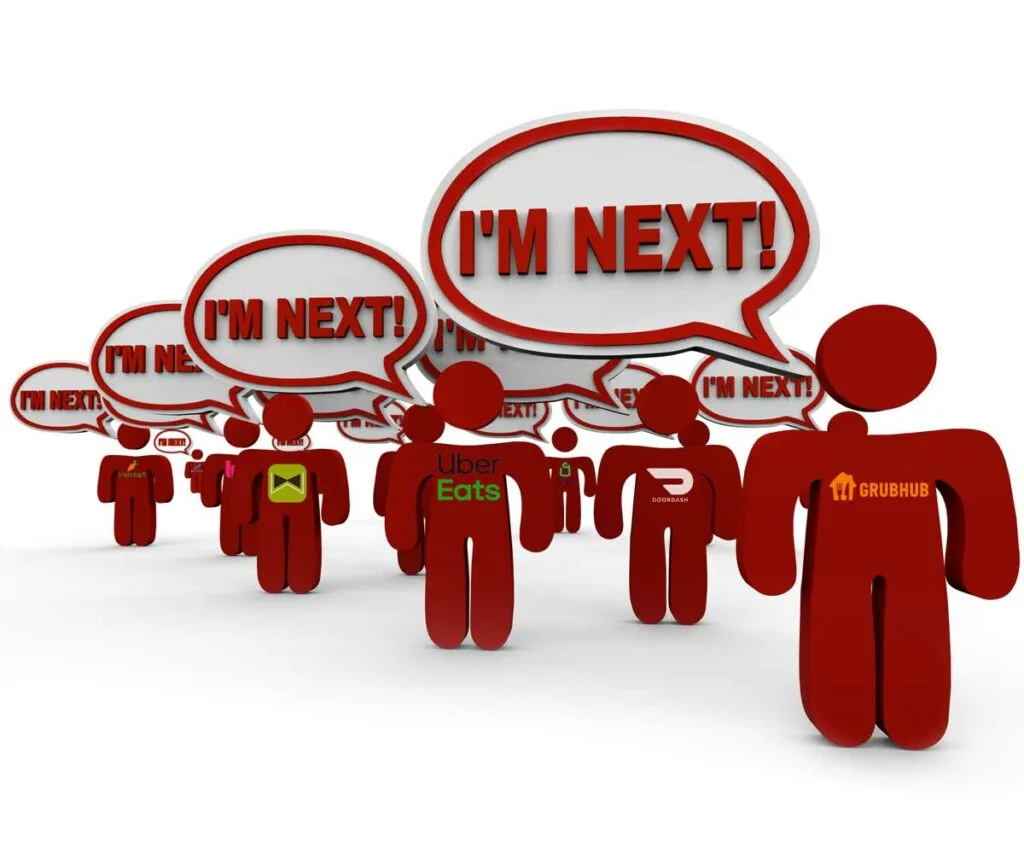
Any kind of offer from any of these companies is a bid for services. And as a business with a customer, an independent contractor has the right to have multiple customers.
The reality is, with most businesses, having multiple customers is a necessity.
And in the end, if Doordash is no longer meeting your price with good offers, Uber Eats might. There’s no need to quit one to work for the other. Keep them all as customers.
Why relying on one delivery company is a bad idea.
There are just too many things that can go south with any one delivery company.
When I started in 2018, Grubhub was the dominant delivery company. No one was close. As of April 2022, Just Eat Takeaway (the European company that owns Grubhub) has indicated they may be willing to sell Grubhub off at a loss, just to get out from under what appears to be a lemon.
Many drivers were loyal to Postmates. Uber Eats bought out Postmates and merged delivery operations. Several Postmates drivers were unable to get on with Uber Eats.
Most of these companies manage by algorithm. That means that often they’ll take action based on patterns the computer picks up. That leads to situations where drivers get deactivated when they haven’t done anything wrong. A late delivery due to traffic issues or a customer lying about not receiving the food can leave you in the cold.
These gig economy apps rely heavily on their driver apps to dispatch and direct services. Apps crash. The systems go down. Doordash in particular has earned the “Doorcrash” nickname for this very reason. If the app isn’t working, you can’t make money.
Finally, earnings potential changes from platform to platform frequently, and market by market. Uber Eats can be fantastic. Then all of a sudden, it’s like everyone decides to sign up. The offers might still be good but now there are too many drivers and you can’t get orders.
Relying on only one delivery company leaves you vulnerable.
Can multi apping get you deactivated?
No. A gig economy company can not deactivate your contract because you work with another customer.
As an independent business enterprise, CONTRACTOR retains the right to perform services (whether delivery services or other services) for other businesses, and CONTRACTOR represents that they advertise and hold themself out to the general public as a separately established business
Doordash Independent Contractor Agreement, as of May 2022, Section II Part 4.
They can not deactivate you or punish you for operating as a business. That means they can’t prevent you from having other customers. They also can’t keep you from going back and forth or from seeking the best opportunity possible for your business.
However, they can deactivate you for providing crappy delivery service. If the way that you work the different platforms leads to you providing late deliveries or poor quality service, that can work against you.
Drivers don’t get deactivated for multi-apping. They get deactivated for not living up to their agreement to provide prompt quality service.
Pro Tips on How to Multi-app
The following tips can help you expand beyond just one delivery company, and also deliver in a way that doesn’t threaten your ability to deliver for any particular company.
1. Get signed on and experienced with all the delivery companies.
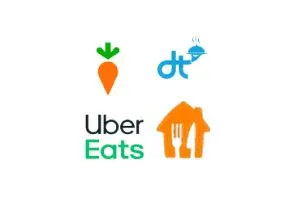
Find out who else delivers in your area. Get signed up with them. Even if you don’t plan to do much with them, get an account.
I don’t recommend you dive in multi-apping right away. Get to know each company. Understand how they work, where they are busiest, how they dispatch, all the things. The better you know each company, the better you’ll be able to tie them together.
2. Make sure you know your market extremely well.
As you integrate different platforms together, you’ll have to make quick decisions. Each app provides different details when they send an offer.
You need to know the restaurants. Which ones likely have the food ready and which ones don’t? Some of this goes back to knowing the platforms. One restaurant can be fantastic on Uber Eats and terrible on Grubhub because of how they get their information.
How likely are you going to have to order and pay? Where is the delivery taking you? How much time do you think something will be done? The better feel you have for all these things, the better you get at weaving together opportunities from several delivery companies.
3. Know your boundaries
Working multiple apps often means you may not be able to operate with any one of them the same as you did before. Your acceptance rate may go down. Are you okay with that? Grubhub and Doordash have scheduling components, and pausing from one could impact your availability on the schedule. Can you work around that in your area?
If you tend to schedule delivery blocks, maybe take some time and see how well you can work off schedule. Just go available on Grubhub and see what quality offers you get. Head out and see how often blocks are available on the fly. Can you Dash Now easily on Doordash?
Make decisions about what you’re willing to give up.
4. Know how you will evaluate deliveries
What exactly makes a good delivery? Do you have a really good feel for what will pay well and what won’t? Have you developed a solid way of deciding?
Bonus pro tip #1: Try the 50 cent rule.
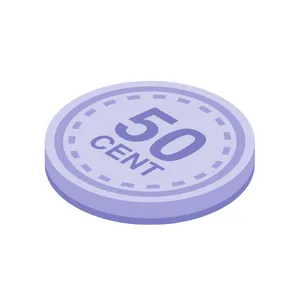
If you have a good idea how long a delivery will take (it comes with experience) the very best method for choosing offers is to estimate how much the offer will pay per minute.
The offer will pay $8.00. You think it will take 20 minutes. Divide 8 by 20 and you get 40¢ per minute. That’s a $24.00 per hour pace. Is that enough? If it is, you know to take it. If not, you might pass.
Your time estimates won’t be perfect but you’ll be amazed how good you get at it with experience. If you’re paying close enough attention and know your area, the averages will work themselves out. In other words, some deliveries will take longer than you think, others will be faster. The better you get, the more the two balance out.
I use a 50 cent rule. It has to pay 50 cents a minute or better. Part of the reason for using it is you don’t have to do as much math. It’s quite simple:
- Multiply the pay amount by 2
- Ask yourself if you can complete the delivery in that many minutes.
A five dollar delivery doubled is 10 minutes. In other words, I have to think I can get it done in ten minutes or less to accept that $5 offer. I have to think I can get a $10 offer done in 20 minutes to take it.
Obviously you need to set your own level based on your expectations and what you can make in your area. However, once you have a system down, it makes working multiple apps much easier.
5. Start with two apps at once and let the bidding begin.
Choose the two apps you know the best. Log in available for both.
And let the bidding begin.
Each delivery offer is a bid for your services. Just evaluate each one as it comes in.
Uber Eats is offering $3.50 for a slow restaurant and five mile trip. Pass. Doordash has an offer that just doesn’t quite pass muster. Pass. Take them one at a time until one comes in that you like.
Once you’ve accepted, you commit to that delivery. Don’t consider any options from the other app until you complete your delivery.
The best way to do that is to pause or log out of the other app. That way you eliminate all the noise from the other app. You found a delivery that makes sense, you can focus on that, and it’s nice and easy.
Uber Eats is easy for this because you can log in and out on the fly. It’s a bit trickier with Doordash and Grubhub if it’s difficult to get a schedule block when you’re out.
If I’m on an app that I’m worried about losing my space, instead of pausing or logging off, I’ll just decline any offers that come in while I’m delivering (or ignore them). That’s something you have to decide how comfortable you are with, mainly because constantly declining can feel like a bit of a frenzy at times.
Two apps may be all you ever want to work at a time. After awhile, if you feel really comfortable with how things are going, you may be ready to open a third. I suppose it all depends on your tolerance for the frenzy of three apps going off at once.
Pro Tip #2: Try tracking every delivery and use it to evaluate.
I’ve tracked every delivery individually since 2018. I have a record of how long each one took, how far I drove, and what it paid. It’s been a fantastic tool to help me see what’s working and what isn’t.
Personally, I use Google Sheets. For every delivery, I calculate my hourly rate (pay times 60, and divide that by the number of minutes). That way I can look at what I accepted and see if I made good decisions or not.
If it paid less than I thought it would, I can ask myself, what went wrong? Was it something I couldn’t have predicted? Was there something I should have thought about like the restaurant is almost always slow?
6. Use caution if you try to stack deliveries.
If you’re avoiding accepting deliveries on other apps once you’ve taken an offer, you probably aren’t creating any danger of messing up any particular delivery. For most drivers, that may be the place to stay.
However, there are times where you can get offers from the same restaurant at the same time, and it appears they’re going the same direction.
Stacking orders from two different apps at the same time can be the best way to maximize profits for your time. If you can get two different good deliveries in pretty much the same amount of time, your profit per hour can shoot up tremendously.
But it’s dangerous if you don’t do it well.
I’ve seen too many drivers take stacked offers going opposite directions. They might get paid a little better, but taking one will very likely make the second delivery extremely late.
Personally, I rarely stack deliveries. I have to be almost certain that I’m not going to get stuck with a long wait at either restaurant, and that taking the deliveries together will not cause a big delay for either one.
Those instances are rare, but they happen.
7. Look at where you can weave in other gig types.
The delivery based gig economy has exploded recently, and it’s moved beyond just meals. Instacart and Shipt offer grocery shopping and delivery. Package delivery companies like GoPuff, Veho and Amazon Flex can send you out on delivery routes that may have guarantees but might not have as much pay for the time involved. DeliverThat and other catering companies can pay quite well for a single trip, but you may have dead time before the delivery so you can make sure you’re there on time.
I’ve written reviews of Veho, who offers route deliveries (typically Hello Fresh meal boxes), of Curri who does building supply deliveries, and DeliverThat which does catering delivery. None of them, in my experience, paid quite as well as what I can make overall on the meal delivery platforms. However, each of those companies can have single delivery offers that do pay well for where I am at a given time of day.
If you can get some opportunities before 11 AM, or between 2 and 5 PM, you may find that you can earn more than what the meal companies are paying during those slow periods.
This is one of the benefits of tracking every delivery. You can start to see what times pay better and decide if there are better options.
If you do some rideshare, you may end up turning on Uber or Lyft at the same time as the others. Of course you have to decide whether the smell of food in the car is going to be an issue for passengers.
I’m almost always recommending getting signed up for a platform if it’s a type of gig you’re comfortable doing. It doesn’t matter if it pays a ton all the time, if it can offer one good opportunity every once in awhile, you can weave it in with all the others.
Frequently asked questions about mutli-apping
Do I need to be full time to multi-app?
No. Multiapping can work whether you are a full-timer or if you’re just doing it as a side hustle a few hours a week. The same principle applies, that you can open yourself up for offers one at a time until a good one comes along.
Is Doordash a good platform for multi-apping?
There are some good and bad things for Doordash when it comes to multi-apping. Doordash provides some good information on their offer screen, and that makes it easier to evaluate delivery offers. The challenge with Doordash has to do with their smaller delivery zones and whether zones are available.
In most markets Grubhub and Uber Eats have much larger delivery markets. They don’t break it down into smaller zones like Doordash does. That means that taking a delivery from another platform can take you out of your Doordash zone. Of course, Doordash sends you out of your zone often enough as it is.
The other issue that goes with the zones is tied to what you do when you accept an offer from another company. Doordash does have a pause function so you can pause your Dash. However, the time is limited. If you don’t have any pause time left, you’ll either need to log out of your zone or frequently reject deliveries from Doordash until you complete the other delivery. That can be a pain.
Is Uber Eats a good platform for multi-apping?
Uber Eats is probably the best multi-apping platform of the three major food delivery services. With Uber Eats, you can just tap go to start accepting offers and log out if you aren’t taking offers. Their offer screens also provide a lot of information, making it easier to evaluate offers quickly.
On an Android phone, the Uber Eats app doesn’t always play as nicely with other apps because of its always on top feature. When an offer comes in, part of the offer screen shows up but not the map.
Is Grubhub a good platform for multi apping?
One of the best things about Grubhub is you know exactly what you’ll get. They don’t hide tips in the way that Doordash and Uber Eats do. They also have a larger single delivery zone in most markets than what Doordash has, which gives you more flexibility for where any delivery from anyone can take you.
The biggest challenge for multi apping with Grubhub is the scheduling part of the puzzle. With Grubhub you can schedule a delivery block or you can simply go available. In many markets, going available without a schedule usually gets you far fewer offers than drivers on a scheduled block receive.
The other issue with scheduling is that Grubhub gets a bit grumpier with drivers not working when scheduled. If drivers drop blocks too often, or if they log out of a block for extended periods of time without dropping the block, Grubhub can remove your ability to schedule in the future.
For me, I tend to stay on my block with Grubhub when on an order with someone else. Orders don’t come as rapidly with them and it’s more practical to just ignore offers rather than try to log out.
Why do so many drivers say they were deactivated for multi-apping?
Usually it’s because the way they were multi-apping was what got them deactivated. Delivery companies all have certain time frames they expect you to complete a delivery in. They say you should be at the restaurant by a certain time, and to the customer by a certain time.
Extreme lateness is a violation of the contract. Personally, I don’t have an argument with that. When you take a delivery, you make a commitment with that acceptance. If you don’t complete that delivery in a timely manner, you’ve broken your word.
If drivers stack orders from multiple companies at once, and anything about any one of those orders makes the other (or others) extremely late, that’s going to get flagged by the delivery company.
In the end, it wasn’t the multi-apping that got them deactivated. It was that they provided bad or late service because of the way they multi apped.


